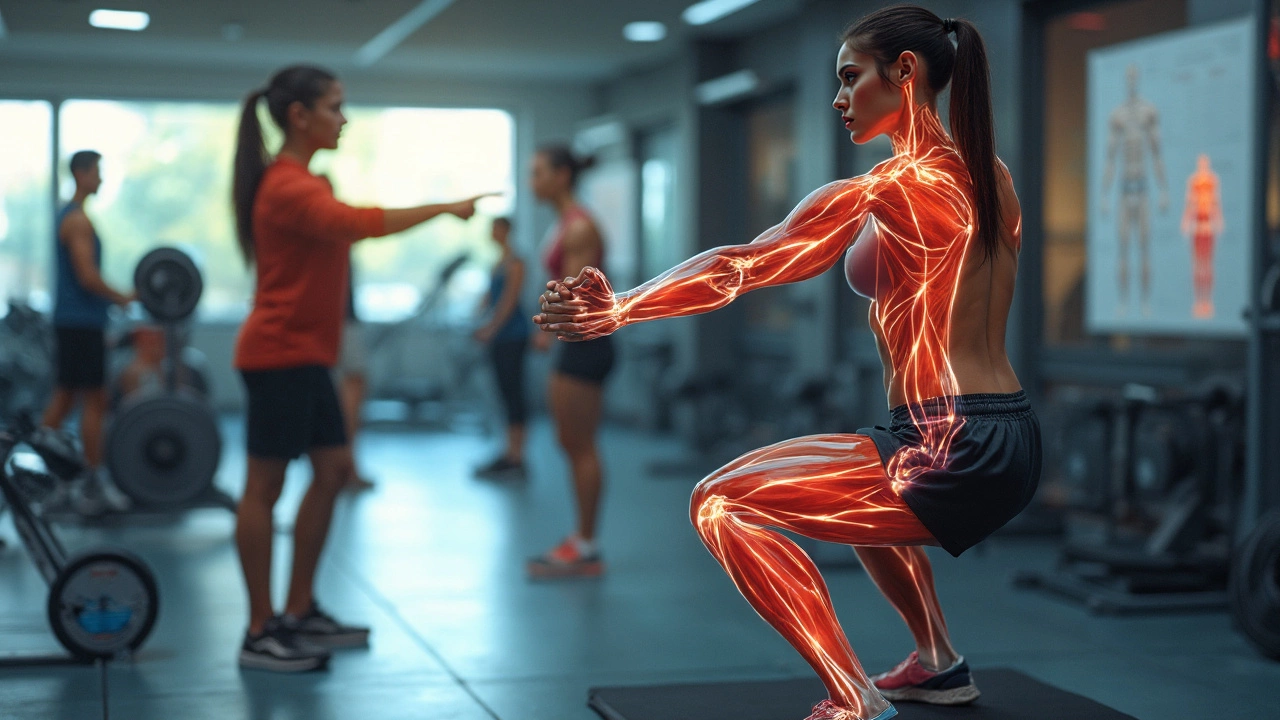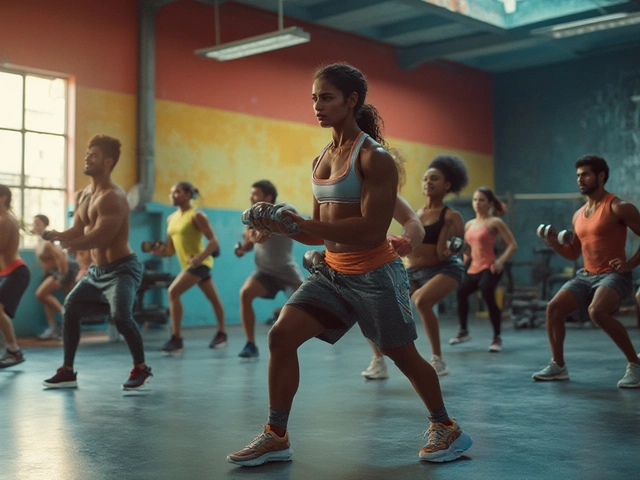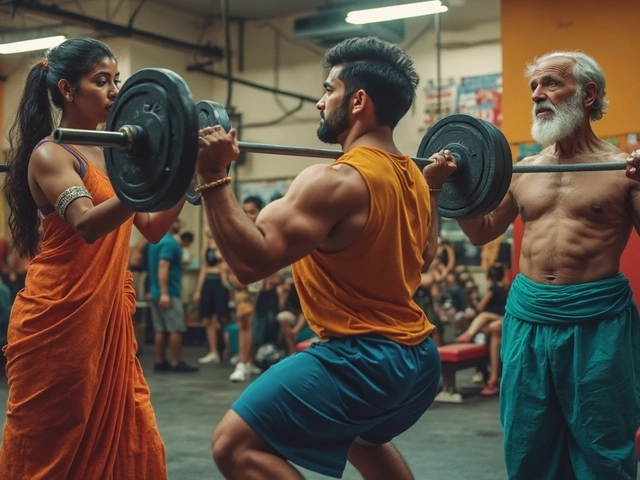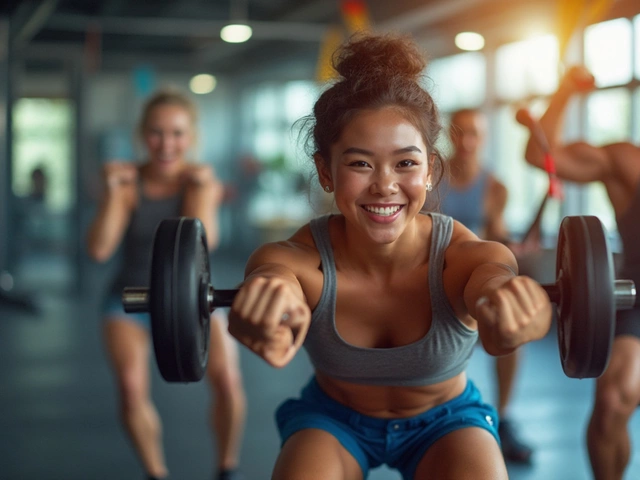Maybe your buddy just bench-pressed a personal record and now you’re itching to know: wait, does the bench press build triceps or chest—or is it secretly making his shoulders massive? It’s a classic puzzle. Each move you do in the gym sends a direct message to very specific muscles in your body, but it’s easy to get lost in the workout maze. Some people forget biceps curls only hit the arms, not the chest. Others spend hours on sit-ups chasing abs, not realizing squats could do more. If you want a body that’s balanced and strong, matching the right exercise to the right muscle is your secret sauce–no more wasted reps or wondering why nothing’s changing.
Major Muscle Groups and What Moves Actually Hit Them
Let’s start with the basics. Your body has several big muscle groups, and different workouts are designed to hit just one or a few. Most trainers break things down into: chest, back, shoulders, arms, legs, and core. Knowing which exercises hit which muscle helps you build workouts that aren’t all over the place—and helps you avoid injuries from neglecting major zones.
Chest is what you’re training when you do push-ups, bench presses, or chest flyes. These hit your pectorals. The bench press—everybody’s favorite test of ego—focuses on your pec major but pulls in the anterior deltoids (front shoulders) and triceps as backup. Push-ups hit the chest in a slightly different way, because you’re also stabilizing your body, which makes them great if you’re short on time or equipment.
Then you’ve got your back. Pull-ups and chin-ups are the staples for those huge lats (that V-shape every guy secretly wants). Rows—using a barbell or dumbbell—also smoke your lats but pull in the mid-back (rhomboids) and traps. Deadlifts? King move for your entire backside: glutes, hamstrings, lower back, and traps. Some studies found deadlifts activate up to 70% of your posterior chain, so if you want one move to rule them all, start here.
Shoulders have three main heads: front (anterior), side (lateral), and rear (posterior) deltoids. Overhead presses, like the barbell or dumbbell press, target the front and side heads while upright rows or lateral raises get the side delts. For the rear delts—key for posture and avoiding a rounded-back look—reverse flyes or face pulls win.
Now, arms. Biceps curls (using dumbbells, barbells, or cables) mostly work your biceps brachii, but if you twist your wrist as you lift, you hit the brachialis too. Triceps get roasted by dips, triceps extensions, and close-grip bench presses. Fun fact: your triceps make up two-thirds of your upper-arm mass, so don’t neglect those if you want true "guns."
Legs are divided into quads, hamstrings, glutes, and calves. Squats light up the quads, glutes, and even your core. Deadlifts, as mentioned, hit hamstrings and glutes hard. Lunges and step-ups help your quads and glutes, but also work stabilizers (muscles that help control your joints). Calves get attention with calf raises, but they’re working to stabilize every time you squat or deadlift.
Your core isn’t just abs: it’s also the obliques (sides of your waist), transverse abdominis (deep abs), and lower back. Planks, Russian twists, and hanging leg raises are tried-and-true moves for a tough, visible core. One interesting study from 2023 found that planks hold your core in tension longer than you’d get from most crunch variations—so if you want that visible six-pack, don’t skip the static stuff.
If you ever want a cheat sheet, here's a quick table showing classic exercises and their main muscle targets:
| Exercise | Main Muscle Group | Supporting Muscles |
|---|---|---|
| Bench Press | Chest | Triceps, Shoulders |
| Deadlift | Back, Glutes | Hamstrings, Core |
| Squat | Quads, Glutes | Hamstrings, Core, Calves |
| Pull-Up | Back (Lats) | Biceps, Shoulders |
| Biceps Curl | Biceps | Forearms |
| Shoulder Press | Shoulders | Triceps, Upper Chest |
| Plank | Core | Shoulders, Glutes |
Targeting the right muscles with each move isn’t just about size, it’s injury prevention, too. People who skip hamstrings are way more likely to end up with knee issues. If you just hammer chest and skip your back, hello hunched shoulders and shoulder pain. Hit all your big muscle groups at least once a week—twice if you want serious gains.
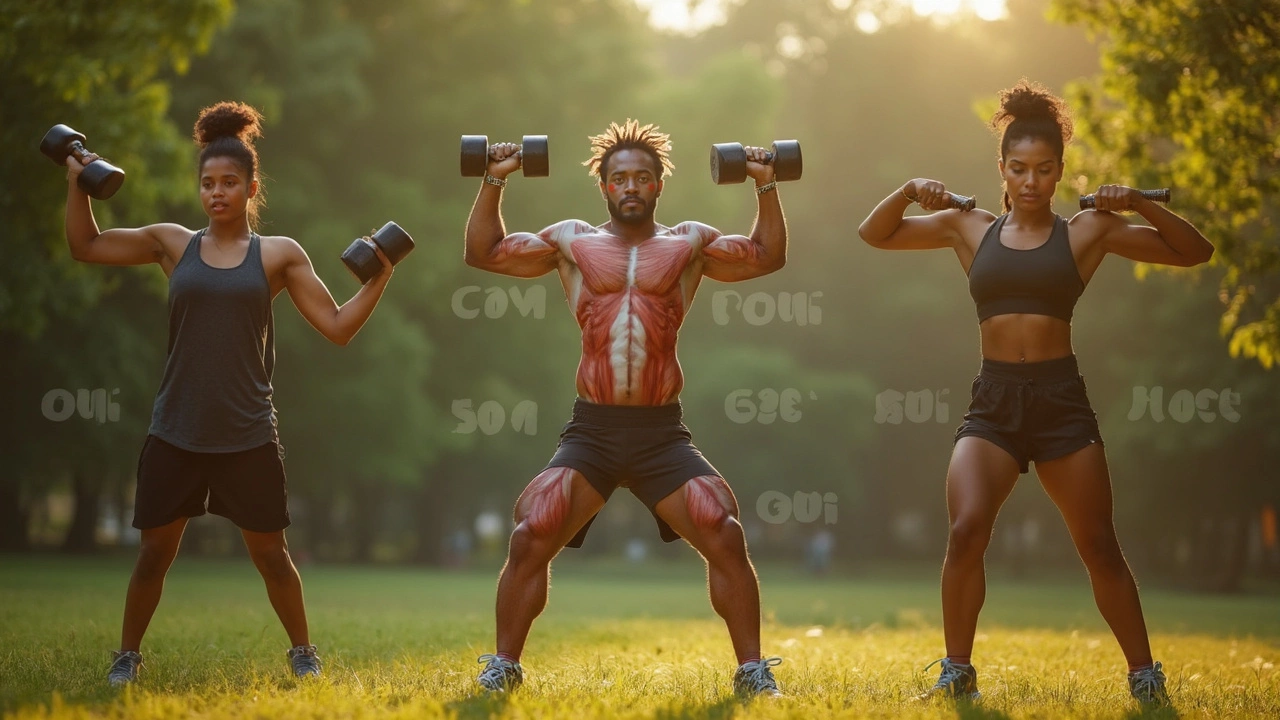
Tips to Maximize Muscle Hit with Each Workout
Doing the exercise is just step one; how you do it makes all the difference. Maybe you’ve seen that guy with perfect posture and textbook-perfect squats—yeah, he’s getting more out of each rep and risking fewer injuries. Here’s how to up your game and make every move count.
First, nail your form. Quality over quantity wins—every time. When you squat, push from your heels, keep the chest up, and drive your knees out a little. For bench presses, squeeze those shoulder blades together and plant your feet hard into the floor. This turns on your stabilizers and gives you more power. Big tip: film yourself or have a buddy check your form. Sometimes it feels right but looks all wrong.
Focus on tempo. If you drop weights fast and bounce out of the bottom, you’re cheating yourself. Try a slow lowering phase (like counting to three as you lower on a curl) and explode up. This slows down the rep, increases muscle tension, and research shows it’s key for muscle growth.
Progression matters. Muscles only grow and get stronger if you push them. The trick: add weight, reps, or sets each week—or try harder variations. For example, when 10 push-ups are easy, try decline push-ups or weighted vests.
Range of motion is a gamechanger. Those half-reps at the squat rack might look "strong," but they cut out muscle growth. Go all the way down (thighs at least parallel to the floor) on squats and presses. Same for pull-ups—chin over bar every time.
Want a smart tip? Use compound exercises (moves that hit lots of muscles at once) as the main event in your workout, then pepper in isolation moves (like curls or triceps extensions) at the end. Studies at McMaster University say compound lifts produce way more muscle-building hormones like growth hormone and testosterone, compared to moves like curls.
If you feel bored or hit a plateau, try mixing in new moves that target the same muscle but challenge it differently. Swap flat bench for incline or decline presses, or add resistance bands to your squats. Muscles adapt quick—keep them guessing.
Finally, recovery. Training breaks down muscle. Real growth happens when you rest, eat well, and sleep enough. Guys who sleep less than six hours a night see slower muscle recovery and lower growth hormone production. Take your rest days seriously—don’t turn every day into chest day.
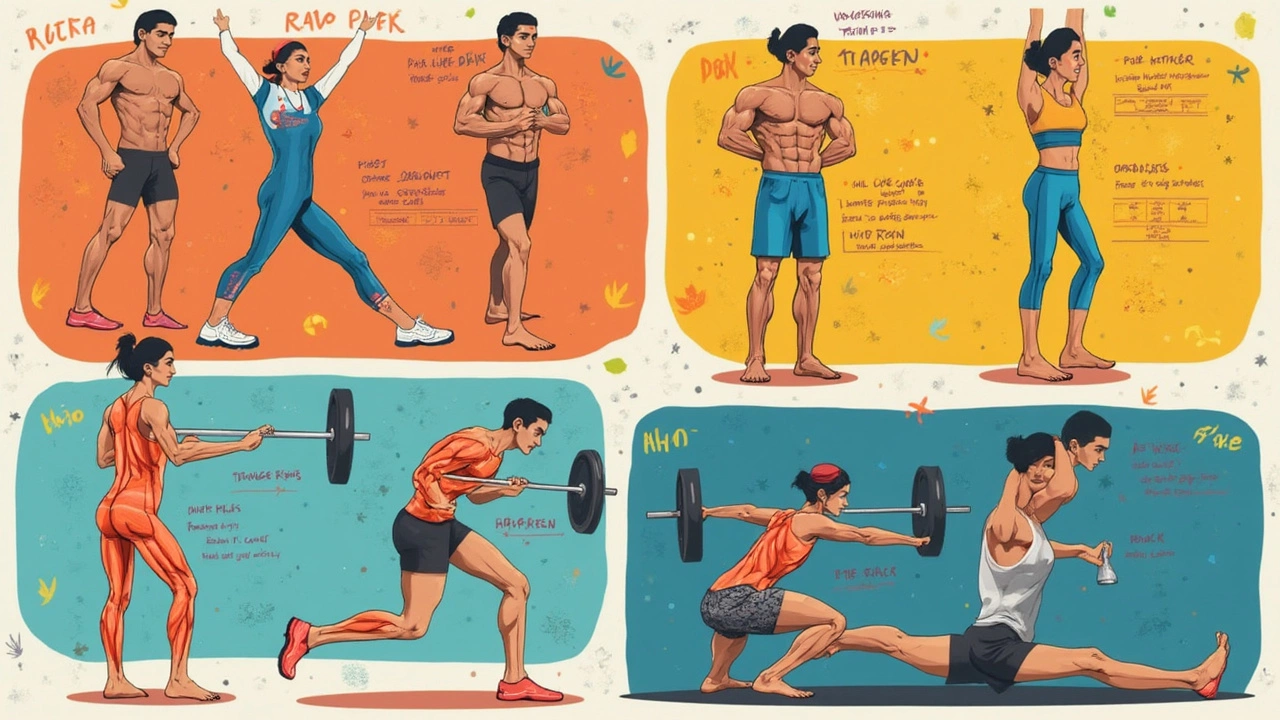
How to Mix and Match Moves for Maximum Results
The best way to organize your week depends on your schedule and goals. But if you want every muscle group in on the action, you’ve got options. You could go classic: push/pull/legs split. Or full body, three times a week. The trick is not to overload one area, and make sure nothing gets left behind.
Let’s break down what a push/pull/legs routine looks like. "Push" days are for chest, shoulders, and triceps—moves like bench press, overhead press, and dips (think movements where you push away from your body). "Pull" days are for back and biceps—pull-ups, rows, curls. "Legs" are obvious: squats, deadlifts, lunges. With this format, you get two days of full rest for each muscle group (enough recovery). Great if your goal is building muscle and you can train most days of the week.
If your life’s busier, try full-body workouts, hitting every muscle group with one compound move each, three times a week. The cool thing: studies by Brad Schoenfeld (the muscle science guy) found that hitting each muscle group at least twice a week led to more gains than just once weekly. So don’t put all your chest moves on Monday and forget until next week. Spread them out.
Maybe you want to create your own program. Here’s the formula: pick 1-2 compound moves per major muscle group per week, then add 1-2 isolation moves to finish. For example, on chest day, start with bench presses, add push-ups or dumbbell presses, and finish with cable flyes. For back: start with deadlifts or pull-ups, add seated rows, maybe hit a reverse fly for rear delts. Legs? Squats rule, but Bulgarian split squats and hip thrusts earn their place too.
Don’t skip warm-ups. Five to ten minutes of light cardio (rower or treadmill is fine) followed by dynamic stretches for each body part you’ll hit. Not only does this fire up your muscles, but it wakes up your nervous system—so you’re less likely to tweak something lifting heavy.
If you want bonus gains, add in mobility work at the end—think hip flexor stretches after leg day, or shoulder openers after a big upper-body session. Research from the American Council on Exercise shows regular mobility work improves your range of motion (and strength) for future sessions.
Here’s another tip: log what you do. It’s hard to remember exact weights, sets, and reps, and tiny progress adds up. Tons of people spin their wheels because they keep doing the same stuff every time. Write it down or use a free app to track it. When you see yourself adding plates to the bar or banging out extra reps, it’s motivating as hell.
If you’re chasing fat loss, these exercises burn more calories than endless treadmill sessions. Squats, deadlifts, and rows light up your metabolism for hours post-workout. That “afterburn” (called EPOC) is why you can grab a burger and not feel bad after a heavy lifting day.
One warning: don’t try to hit every muscle, every day, as hard as possible. Your body rebounds best with the right mix of work and rest. If your arms are fried, you won’t be able to push big weight on chest or back moves later. Follow a plan, and listen to your body if you’re feeling run down.
The magic sauce is simple. Use the right moves, aim for perfect form, mix up your routine, and rest well. You’ll know which workout hits which muscle, and you’ll build a balanced, strong body that can handle anything life or the gym throws at you.
